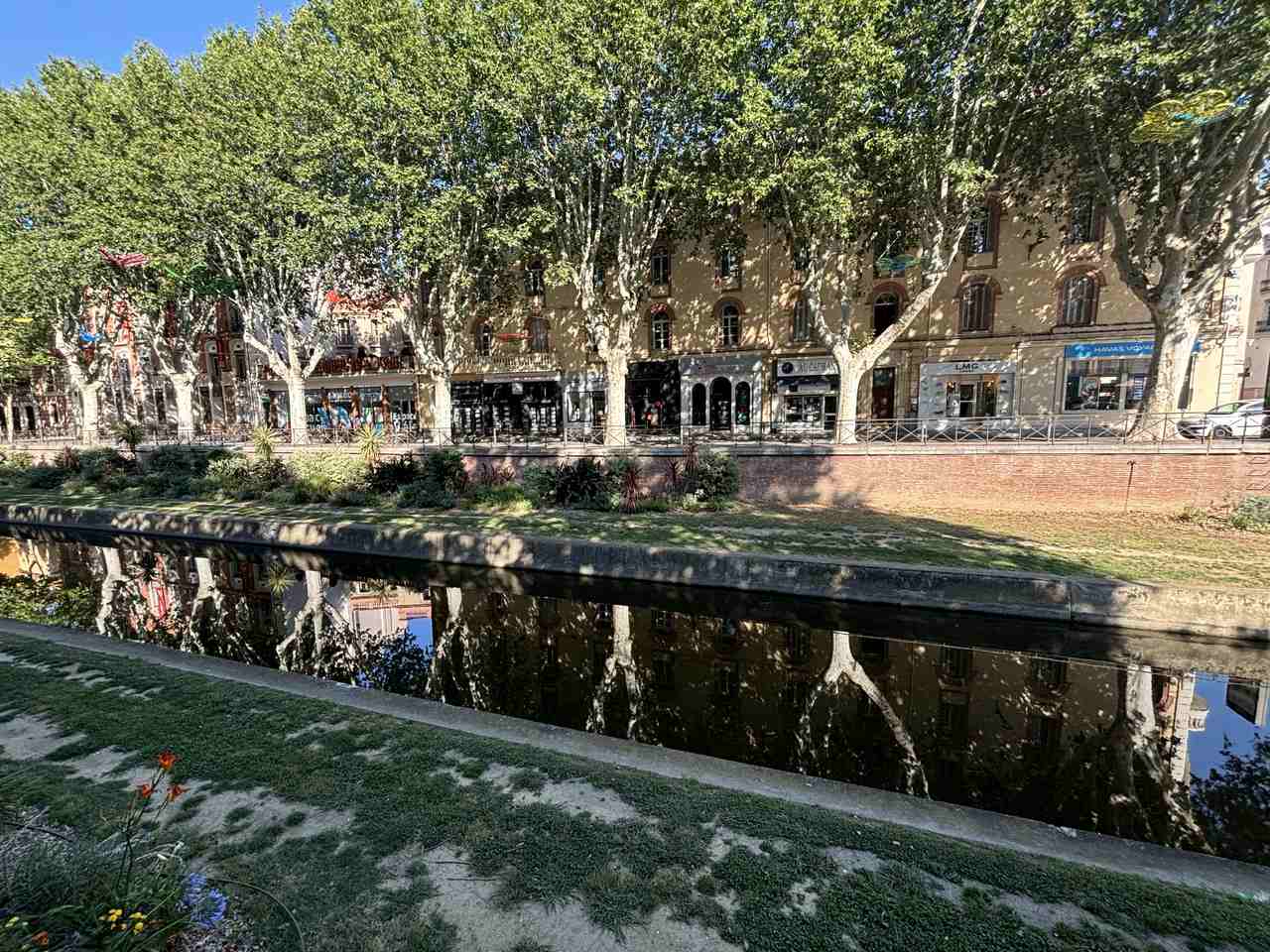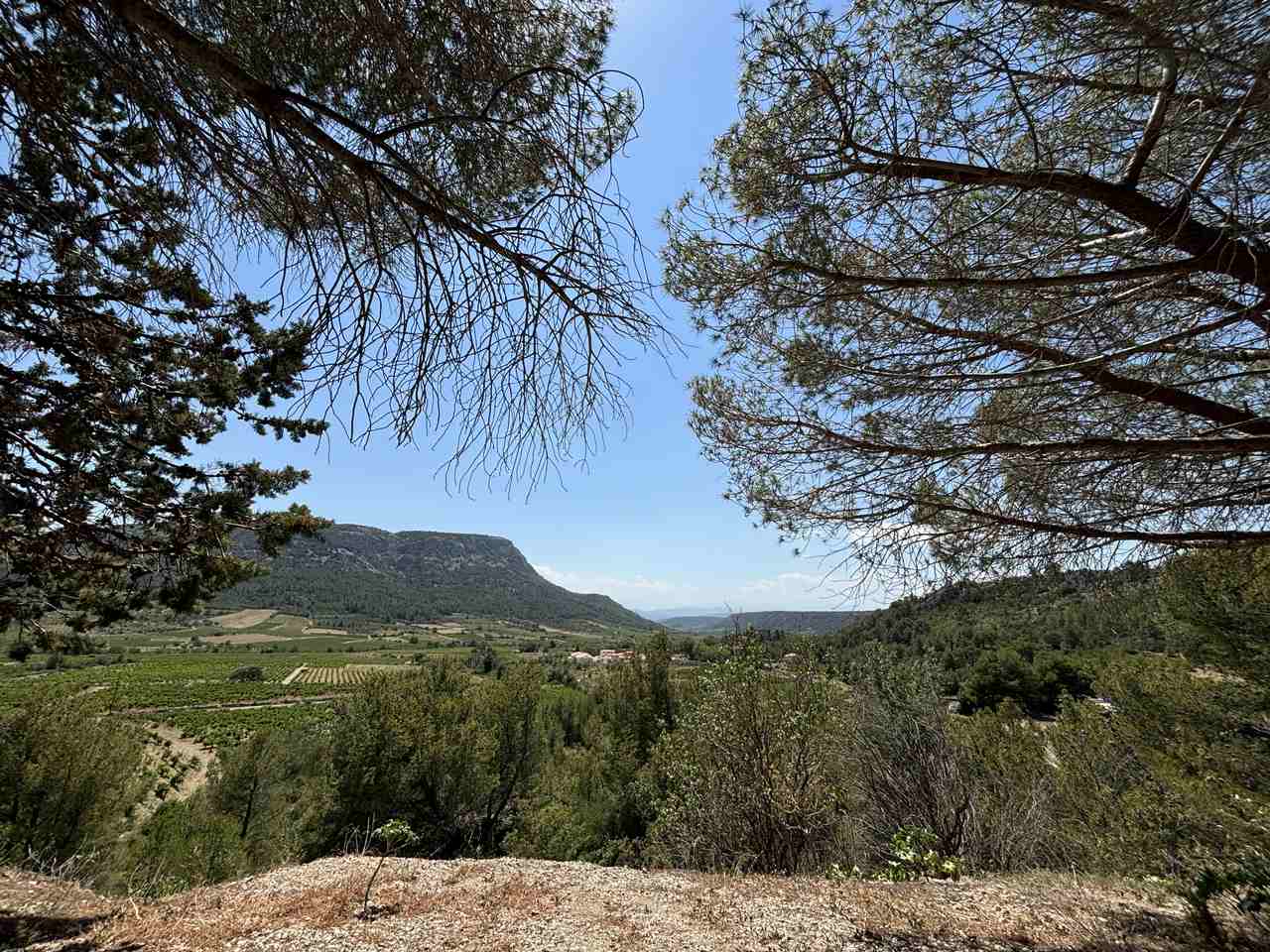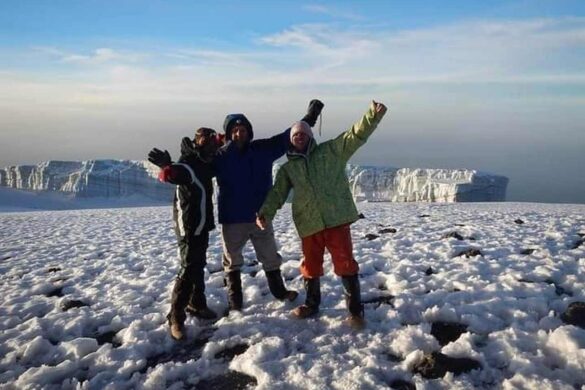There’s so much more to Perpignan Mediterranee than the lovely mediaeval city for which this tranche of urban and natural delights perched between the Pyrenees and the Med is named.
Like that better-known and vastly more crowded South of France hundreds of miles to the east, this far southwestern region boasts a 15-mile long string of beach resorts and a ravishing mountain backdrop to its central city, but feels far closer to Spain, to which it belonged until 1659, culturally and gastronomically than the Italy-bordering Cote d’Azur.
Perpignan City
Perched between ocean and mountains, this lively capital of French Catalonia has a mediaeval heart, its main monument the 13th century palace of the Kings of Mallorca.

Perpignan canal
Ascend the 142 steps of Castillet, the fortified city gate which has become its emblem, for a panoramic view over the Basque River, or wander the narrow streets to reach the Hyacinthe Rigaud Museum. Despite its ancient bones, this impressive gallery offers a comprehensive collection of art relevant to or inspired by the region from mediaeval religious paintings to ultra-modern collages. There’s a whole room devoted to the post-Impressionist Raoul Dufy, one of many famous painters who lost their hearts to Perpignan.
Perhaps the finest local example of 21st century applied art is the beautifully-woven stripey textiles synonymous with the town. Seek them out at Les Toiles du Soleil in a lovely square overlooking the palace; this emporium with branches in New York and Tokyo not only sells fabrics by the yard, but beautiful, brightly-coloured pottery and other homewares.
Elsewhere in the centre, beach bags embelllished with silver or gold ribbon offer another local form of retail therapy, while Kartell and other high-end furniture emporia have made their home at Aux Dames de France, a beautiful former art nouveau department store on Place de Catalogne.

Perpignan – Dali statue
This huge square is also worth visiting for the iconic statue of a tiny man on a gigantic red chair – it celebrates the surrealist Salvador Dali, who dubbed Perpignan station, directly facing the statue, the centre of the universe.
Where to stay in Perpignan City
Surprisingly stylish for a budget hotel, the Ibis Style Perpignan Centre is awash in colourful fabrics and fields an all-day bar with a charming little garden in which to sip a beer or a coffee. It’s just a 10-minute stroll from here to the heart of the old city via the Place de Catalogne.
Where to eat in Perpignan City
Locals turn out en masse to eat in a communal outdoor area adjoining the Halles Vauban, a food hall where diners can collect their favourite eats as diverse as fresh oysters to cheese and charcuterie tapas platters to sliders and quite fabulous artisanal pizzas baked in wood-fired ovens. Almost opposite, across lively, eatery-lined Place Arago, Cafe Vienne is a proper ice-cream parlour where you can still get that increasingly all-too-rare dessert treat, a chocolate or cafe Liegeois. When it comes to a serious sit-down lunch, enjoy sophisticated regional fare like roast guinea-fowl accompanied by a bottle of delicious local Cotes Catalanes rose at Restaurant L’Osmose on place Jean Payrat.
Torreilles
Small but sprawling, this laid-back little beach town with some charming narrow lanes has a market square overlooked by a gigantic crocheted octopus hovering protectively in the trees.
However, its principal claim to fame is a vast, wild, protected beach awash in dunes and sea grass. There are live music gigs all summer long, including a July jazz festival that takes place beside the jewel in Torreilles’s crown, the exquisite little 15th century Chapelle Notre Dame de Juhegues. Don’t miss the delightful cloister and garden next door which acts as Torreille’s community centre.
Where to stay in Torreilles
Unexpected but interesting is the brand-new Gaia Hotel, its ultra-modern raw concrete room decor softened by a charming courtyard complete with ornamental pool where an exceptionally good breakfast featuring excellent croissants, fresh-squeezed orange juice and eggs cooked to order – can be taken.
Where to eat in Torreilles

Torreilles – fideua in the market square
Beach restaurants are the only infrastructure allowed on the wild sands, and a great place from which to appreciate the breaking waves and wealth of sea-grass. But on market day – Tuesday and Friday mornings year-round – there’s nothing to beat a plate of freshly-made fideua, the unique Catalan take on paella substituting vermicelli for the rice. It’s dispensed to hungry diners from a huge frying-pan set up in the square until, inevitably, it sells out.
Sainte Marie La Mer
Like Torreilles, this is a proper town with urban delights which also happens to have a great beach down the road. From the old town hall square, wander beneath alleys of decorative umbrellas leading to an arty quarter whose walls are splashed with delightful trompe l’oeil, the work of superlative mural artist and long-time resident Bernard Gout.

Sainte Marie la Mer-sushi at beach club Victoria
Enjoy sand between the toes dining at the Club de Plage Victoria on the seafront – a delightful cross-cultural menu offers both great sushi and excellent paella, almost the national dish in this corner of formerly Spanish France. (saintemarielamer-tourisme.com)
Canet-en-Roussillon
A large resort lined with tall apartment buildings, its greatest raison d’être for families is Oniria (oniria.fr), a world-class, 83-tank aquarium which makes for a fine and absorbing visit of 10 different maritime habitats with activities including starfish-petting, staring down sharks and feasting the eyes on jewel-coloured shoals of tropical species on a cool, wet or windy day. There is also a charming old village to explore far from the rows of seaside condos and an art deco villa trail, thanks to the wealth of 1930’s houses built as weekend boltholes for the affluent merchants of Perpignan.
Le Barcares
This resort is best-known for Lydia, an iconic beached 1930’s steamboat recalling the pre-war era of elegant ocean cruising, and Les Deferlantes, a major music festival taking place over three days in early July.
Laid-back with plenty of VIP hospitality options overlooking the vast main double stage (best view of all is from the top deck of Lydia), it also fields a techno tent. Dominated by French acts, the 2024 festival nevertheless featured top international names including The Prodigy, Placebo, Julian Marley and Mika.
Tautavel and Vingrau

Valley and vineyards view from Circuit de Vingrau
It would be tempting to stay on the beach, but the Circuit de Vingrau is reason enough to get up into the majestic mountains, inhale the fragrance of the wild garrigue and feast eyes on the heart-stopping views of the valley and ocean below.
Some of the first known European human remains – half a million years old – were discovered up here near Tautavel, which has an engaging museum of pre-history. Also to be visited are magnificent gorges and a route des vins – taste excellent Cotes du Roussillon and Muscat de Rivesaltes at wineries including the delightful Serre Romani at Espira de l’Agly, which makes both highly-quaffable dry and distinguished dessert wines.
Getting there
Perpignan’s tiny airport is served by direct flights from the UK by Ryanair, and can also be reached from the larger Girona airport across the Spanish border. The city sits on the high-speed train line running west along the southern French coast to Barcelona.
More info visit www.perpignanmediterranee-tourisme.com
Find a flight:
The post Guide to Perpignan Mediterranee, France appeared first on The Travel Magazine.




























